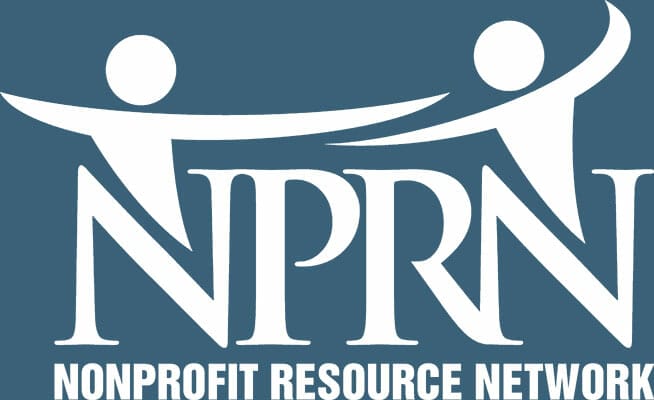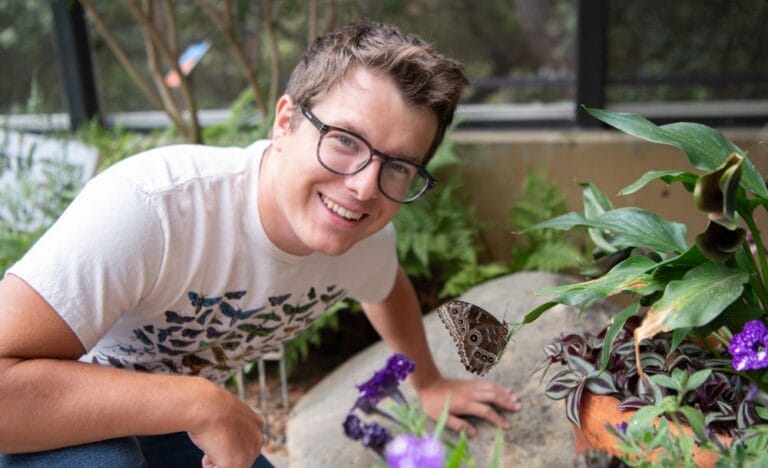- New Schlinger Chair of Entomology Alex Harman, Ph.D., has joined Museum staff.
- Harman is a power user of the popular community science database iNaturalist.
- He is experienced in a variety of fieldwork methods to study animals in an ecosystem.
- He obtained his Ph.D. in entomology at Oklahoma State University.
SANTA BARBARA, CA— Santa Barbara Museum of Natural History’s new entomologist is an all-around naturalist with a flair for wielding the power of iNaturalist, the popular community science database. Museum staff are excited about the new skills he brings to the Museum’s team of on-site scientists working in the Collections & Research Center.
Schlinger Chair of Entomology Alex Harman, Ph.D., has now published research on grasshoppers, tiger beetles, and butterflies—but at age three, he was afraid of insects. He credits his grandmother, (who taught entomology) with turning his terror into appreciation by giving him woolly bear caterpillars and other harmless insects to hold. A year later, he started building his own insect collection, and has stuck with it ever since.
The new entomologist has already started supporting the Museum’s exhibits and educational efforts by working behind the scenes in the butterfly lab to prepare chrysalids for the emergence chamber. Adult butterflies that emerge go into the Sprague Butterfly Pavilion (open through September 1 this year).
Harman completed his master’s and Ph.D. research at Oklahoma State University, engaging in extensive fieldwork. He traveled to all 77 counties of Oklahoma to survey the state’s diversity of grasshoppers. To assist the Oklahoma Department of Wildlife and Conservation, he studied the Ozark Glades, unique ecological communities of isolated grasslands in the Ozark Mountains. To inform conservation and management, the ODWC wanted information about the biodiversity of the glades, correlated with environmental factors like glade size and the amount of tree cover. To collect this data, Harman employed a wide variety of methods, from camera trapping and bird point counts to marking butterflies and setting out cover boards for reptiles to hide under.
The scientist is excited about the fieldwork opportunities presented by the Golden State. “In California, we have actual mountains, so you can go from sea level to a few thousand feet in elevation in a 20-to-30-minute drive,” Harman notes. “All that biodiversity associated with the precipitation gradient and the elevation gradient is squeezed into a much smaller area. That’s part of why California—and this region in particular—is so biodiverse.” He’s recently published work following up on community science observations in iNaturalist to track down overlooked populations of rare tiger beetles in California.
“The biggest strength of iNaturalist is the amount of observations that are taking place,” he explains. “I can go out and I can catch all the insects I’m interested in, but I can only cover so much area. But if you have an army of tens of thousands of users out there taking pictures of everything . . . you put enough people out there who love nature and go to weird places, they’re inevitably going to photograph some weird stuff. . . things that haven’t been seen for 40, 50, 80 years—and even new species have been described from iNaturalist observations.” On iNaturalist, experts like Harman can review observations submitted by users in the community and help identify organisms. He has personally identified over 270,000 user observations—mostly among North American tiger beetles—and encourages nature-lovers to get to know the platform so they can make contributions to science.
“As an entomologist, if you can identify an insect someone sends you a photo of, that’s half the battle right there,” says Harman. “The second question people usually ask is ‘Is it good or bad?’ A lot of people see ‘bad’ bugs like mosquitoes, ticks, and things like that. They see ‘good’ bugs, the ones that people like: honeybees, ladybugs, butterflies. But the vast majority of insects are just doing their insect thing, not impacting humans directly by biting us or making honey, but playing important roles in the environment. Insects are important, not just because of their relationship to us.”
Harman is looking forward to preserving and growing the Museum’s collection of insects and arachnids. “Just like specimens of all the other living organisms in museums, insect collections are a great source of data for seeing how ranges change over time,” he says. “It’s important to establish baseline data of what insects are found where, and in what habitats, to see how their distributions shift over time in response to things like different climate conditions.” He adds that like the iNaturalist database, the use cases for museum specimens only expand with time: “We collect with the assumption that in the future we’ll have even more to learn. People who were collecting specimens 100 years ago had no idea that in the future people could get DNA from some of them. There are probably lots of things you can learn from specimens that we might not even have as a concept yet.”
For more information about Harman’s past research and future goals, read an interview with him on the Museum’s blog.
About the Santa Barbara Museum of Natural History
Powered by Science. Inspired by Nature. The Santa Barbara Museum of Natural History connects people to nature for the betterment of both, drawing on collections that preserve the natural and cultural heritage of the Central Coast and beyond. Founded in 1916, the Museum is a private nonprofit supported in part by philanthropy, membership, and visitors. Members visit free. For more information, visit sbnature.org.


Leave a Response